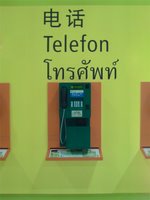Among all forms of Chinese opera genres, The Hokkien Gezi opera, also known as Xiangju in mainland China, is one of the most unique kind of all. Other than being the only opera form which was bored outside mainland China, there weren’t many opera genres which take on many different forms and styles, depending on geographical location and cultural differences. In Taiwan, there is even a style of Gezi opera called “O-Pe-Ah”, which is unheard of in other Chinese genres.
“O-Pe-Ah”, the Hokkien translation of the Japanese term “O-Pe-Ra”, which was in turn a loan word from the English word “opera”. “O-Pe-Ah” style of acting is very different from traditional Chinese opera in the sense that it is very heavily influenced by Japanese culture and contemporary music and theatre. Imagine this: the leading roles of the show (obviously ethnically Chinese) churns Taiwanese pop songs to the accompaniment of modern musical instruments, and at times walk around the stage in kimonos, wearing Japanese clogs and brandishing samurai swords. Sounds bizarre? Well this was partly a result of Taiwan’s troubled past.
In 1937, when the Sino-Japanese war broke out, Taiwan was annexed under Japanese territory, and under the influence of the Japanese imperialism laws at that time, the Taiwanese people were forced to abandon their traditions and assimilate into the Japanese culture. Taiwanese Gezi opera wasn’t spared either; opera troupes had to either adapt themselves to Japanese culture, or get banned from performing. There was this classic example whereby “The Case of the Leopard Cat” (狸猫换太子) was adapted into Japanese setting; actors wore Kimonos, the role of the Emperor became “General manager” while the role of Concubine Liu became “the Mistress” etc. This kind of acting styled carried on until the end of the Sino-Japanese war, and opera troupes were finally able to revert to the old ways of performances. However, due to the immense growth of performing arts shortly after the war ended, opera troupes had to find new ways to attract audience. One of the innovative ways then was to incorporate some of the essence of Japanese occupation period’s way of “renovated” Gezi opera performance into their shows, and this is how “O-Pe-Ah” style of Gezi opera came into existence.
“O-Pe-Ah” style of Gezi opera, being deviated from the traditional style of Chinese opera, has a completely different repertoire of shows as compared to other opera forms. As such, one will not see historical stories or classic Chinese folktales in “O-Pe-Ah” shows, but mostly swords-fighting or family-orientated (cross-generation feuds, love-triangles, etc.) stories which are not independent of time and era. By traditional opera’s point of view, the “O-Pe-Ah” style of Gezi opera may sound like an absurd form of opera, but if one were to treat it just like contemporary entertainment without too much seriousness, such forms of performance can be rather entertaining.
(Video footages taken from Xiao Fei Xia Gezi Opera Troupe’s performance at Lor Koo Chye Temple on 21 May 2007, titled “The Twenty-Year Feud”; apologies for the poor video and audio quality as it was recorded off a mobile phone’s camera)


No comments:
Post a Comment